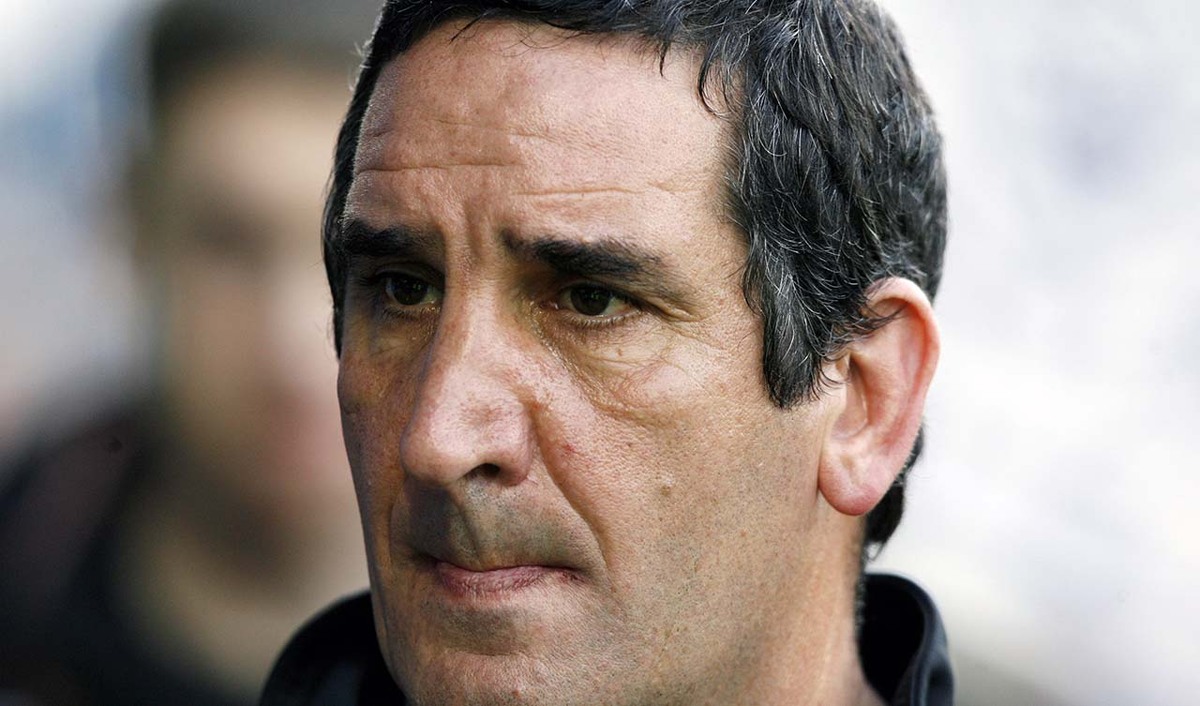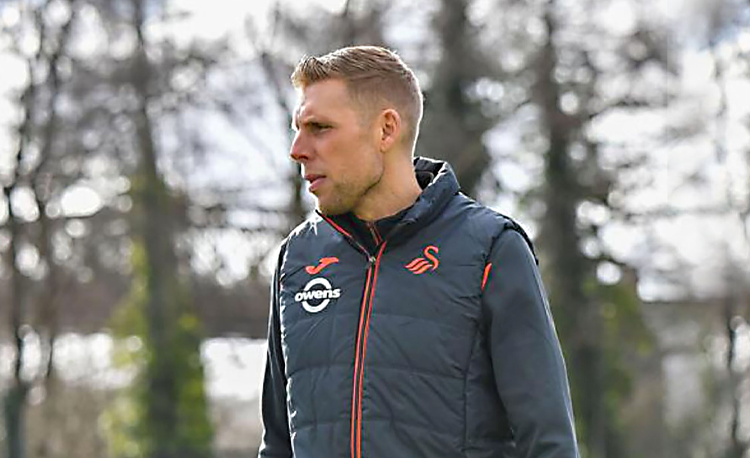You are viewing 1 of your 1 free articles
Link-up combination play
Movement, support and running off the ball is essential in the modern game, and fine-tuning these abilities in players can really enhance attacking options throughout the team. Therefore, this unopposed drill is designed to examine receiving, touch, lay-off, link-up play and third-man running, so that players can work together in tight areas to maximum effect.
| Area | 25x10 yards |
| Equipment | Balls, cones |
| No. of Players | Full squad |
| Session Time | Session 10mins, development 30mins |
Movement, support and running off the ball is essential in the modern game, and fine-tuning these abilities in players can really enhance attacking options throughout the team. Therefore, this unopposed drill is designed to examine receiving, touch, lay-off, link-up play and third-man running, so that players can work together in tight areas to maximum effect.
For simplicity, we have depicted this drill using one ball in one direction. As players progress, both directions can be played as one revolving move. And progressing further, we would use a ball in each channel at the same time.
What do I get the players to do?
We set up a 25x10-yard practice area. Play is contained in the right side of the area, with two central players working off each other. Waiting players stand in lines at both ends of the area, as indicated.
The basics are:
• Server makes a long pass to the right-side player who makes a forward run and spins to receive
• Server makes left-side run
• Short pass is played by right-side player to team mate who arcs his run then feeds server
• Server dribbles forward and passes to the receiver at the front of the top line (1).
1
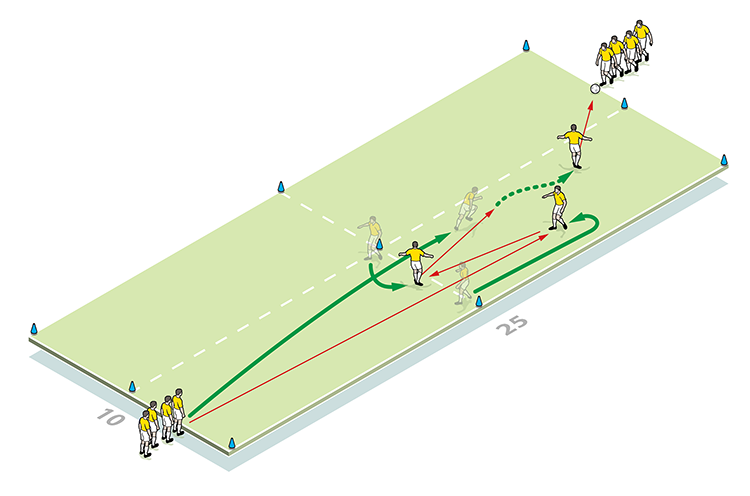
The player joins the back of the line ahead while central players return to their positions.
How do I progress the session?
For the first progression, the server can now pass short. If he chooses to, the left-side player on the halfway line comes towards him, spins ‘around the corner’, then feeds the right-side man, with the move then continuing as before (2a).
2a
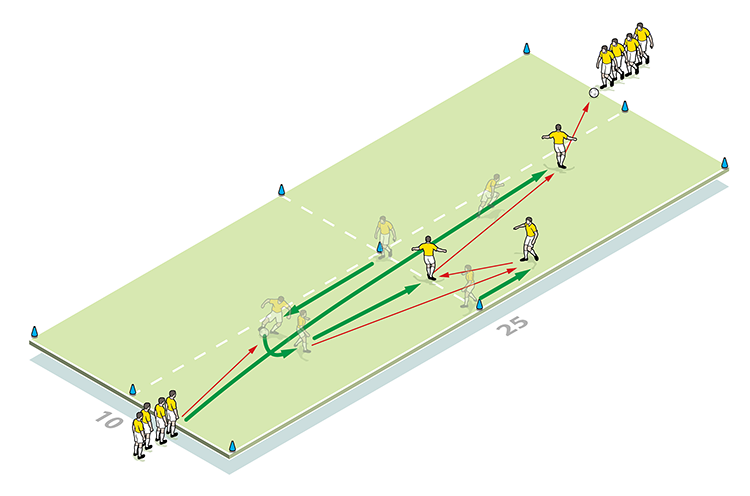
Progressing further, the variation now sees the central player drop short and play a ball into the path of his onrushing team mate. A short pass is then squared to the server who collects (2b).
2b
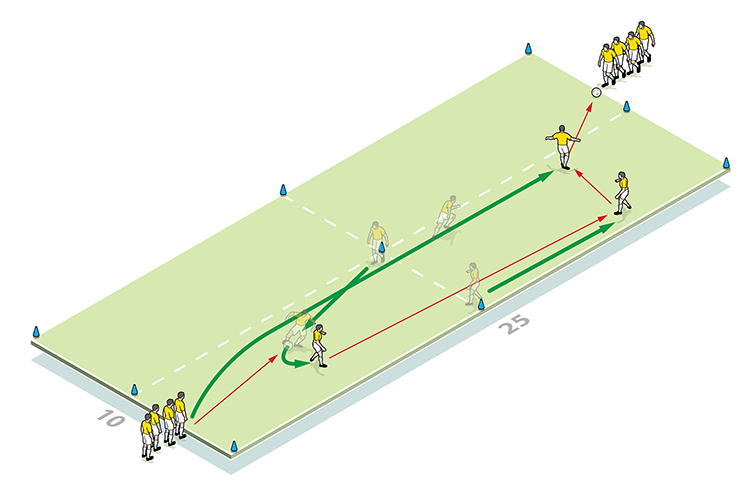
The distance and angle of link-up play in the middle determines the receiver’s reaction time, and whether he chooses to start the return phase with a long or short pass.
In the next progression we introduce a stationary target on each top line. The server plays a one-two then feeds the target while the other working player links up to receive the lay-off, before passing to the receiver in the line (3a). The initial server becomes one of the middle players and the move continues in both directions, using short and long passes (3b).
3a
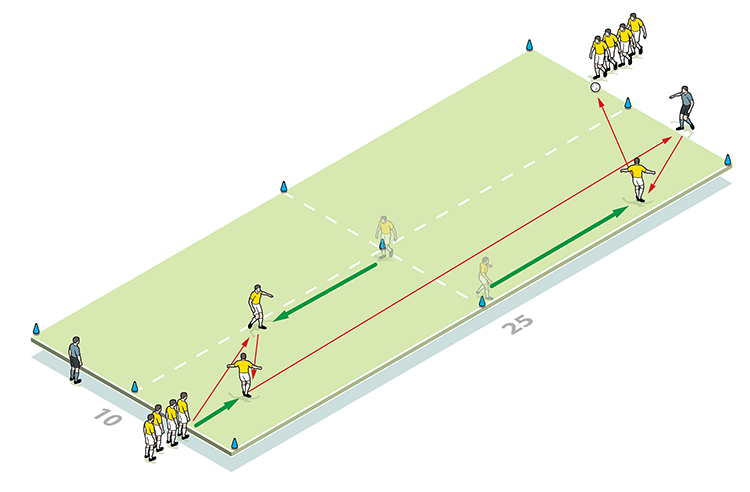
3b
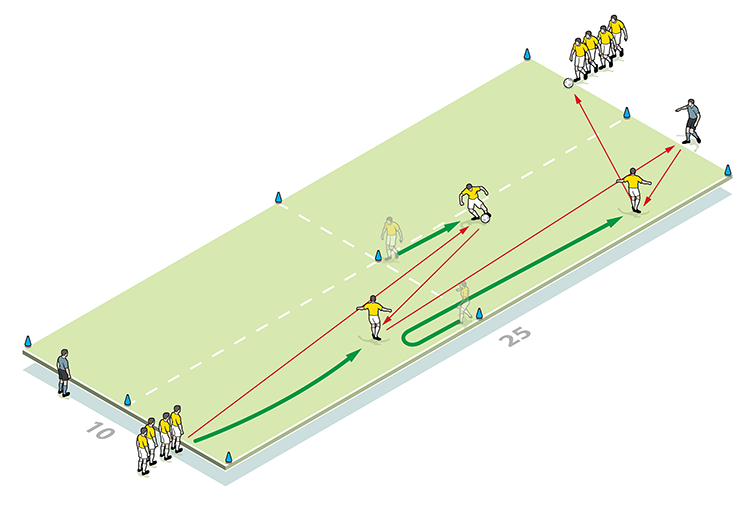
Finally, we progress this into a shooting session around the box, looking at the movement of the two front players and runs from midfield, with markers introduced to increase difficulty (4).
4
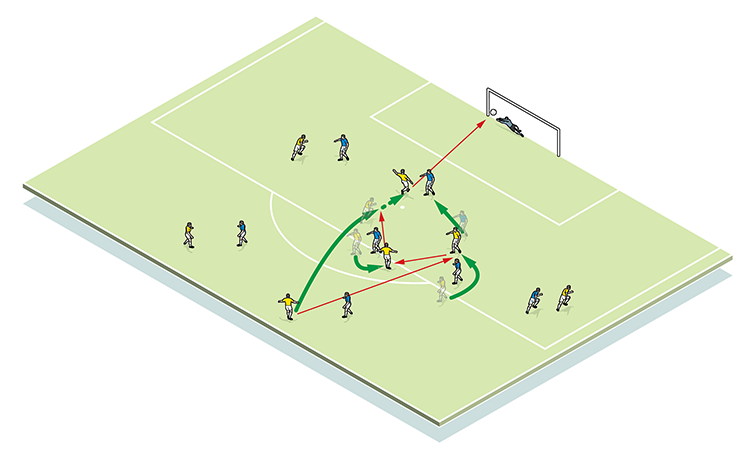
What are the key things to look for technically/tactically?
We want good pass weight and accuracy, early movement and support. Runs have to be well timed and players can take an extra touch to ensure the move continues.
Related Files
Editor's Picks
Deep runs in the final third
Using the goalkeeper in build-up play
Pressing principles
Intensive boxes drill with goals
Penetrating the final third
Creating and finishing
My philosophy
Pressing initiation
Compact team movement
Coaches' Testimonials

Alan Pardew

Arsène Wenger

Brendan Rodgers

Carlos Carvalhal

José Mourinho

Jürgen Klopp

Pep Guardiola

Roy Hodgson

Sir Alex Ferguson

Steven Gerrard
Coaches' Testimonials

Gerald Kearney, Downtown Las Vegas Soccer Club

Paul Butler, Florida, USA

Rick Shields, Springboro, USA

Tony Green, Pierrefonds Titans, Quebec, Canada
Join the world's leading coaches and managers and discover for yourself one of the best kept secrets in coaching. No other training tool on the planet is written or read by the calibre of names you’ll find in Elite Soccer.
In a recent survey 92% of subscribers said Elite Soccer makes them more confident, 89% said it makes them a more effective coach and 91% said it makes them more inspired.
Get Monthly Inspiration
All the latest techniques and approaches
Since 2010 Elite Soccer has given subscribers exclusive insight into the training ground practices of the world’s best coaches. Published in partnership with the League Managers Association we have unparalleled access to the leading lights in the English leagues, as well as a host of international managers.
Elite Soccer exclusively features sessions written by the coaches themselves. There are no observed sessions and no sessions “in the style of”, just first-hand advice delivered direct to you from the coach.
